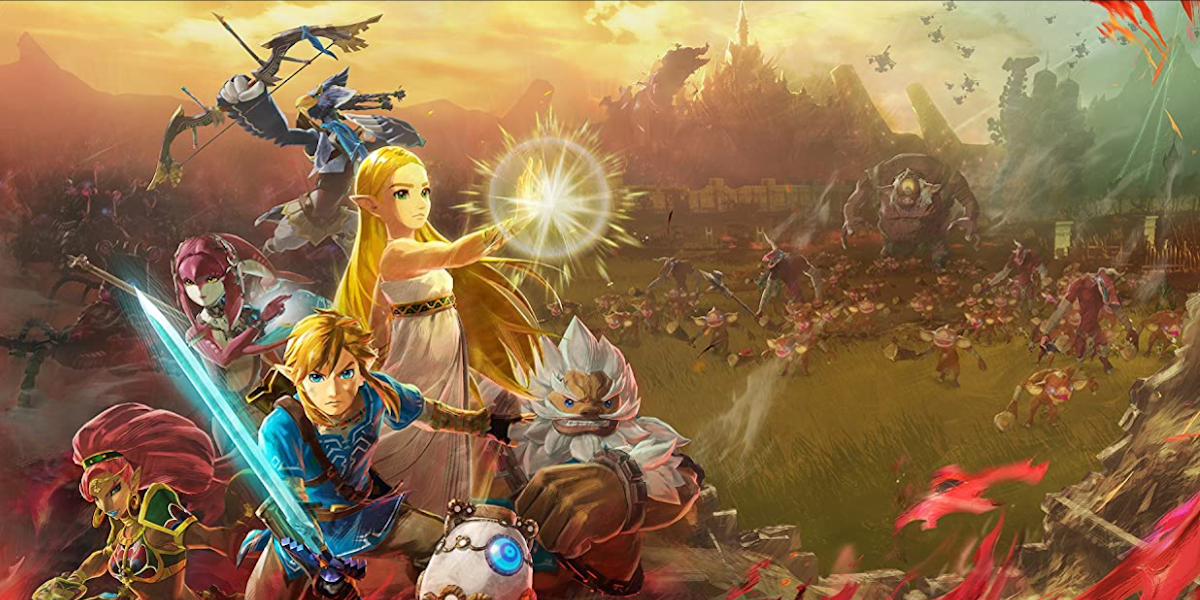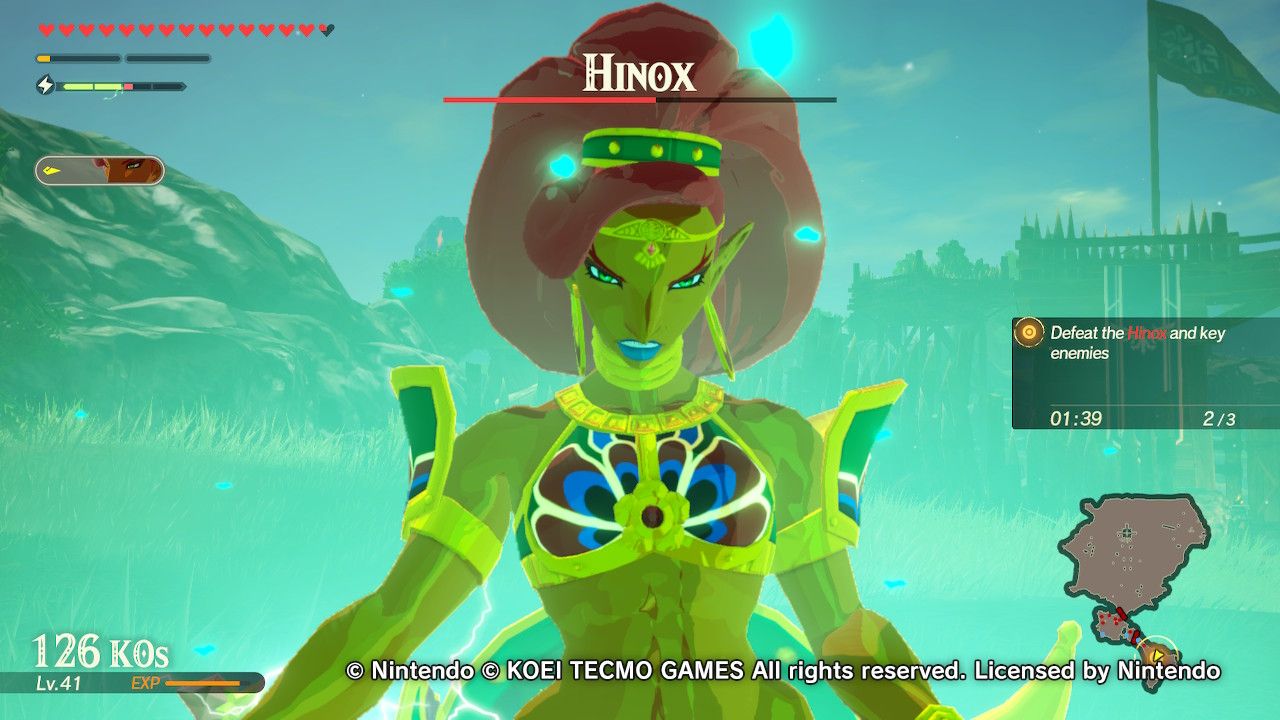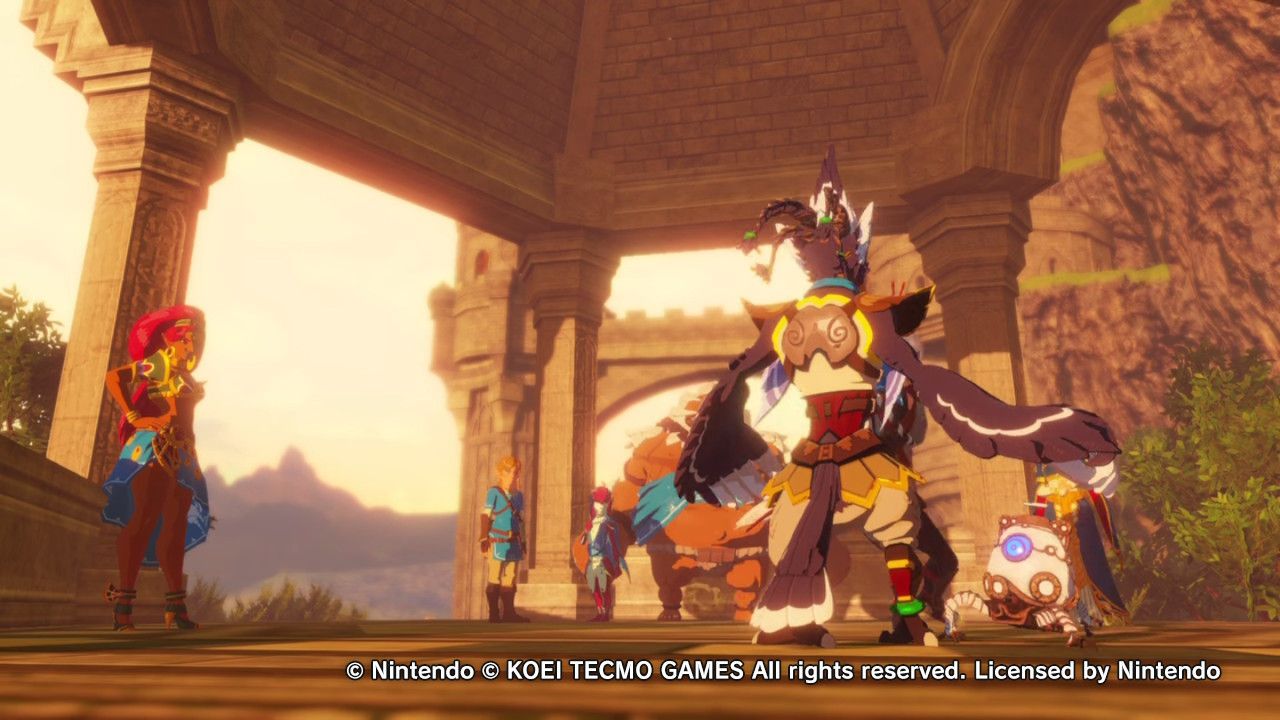Koei Tecmo Executive Vice President Hisashi Koimura once said the licensing options for Musou games are “near limitless.” Hyrule Warriors: Age of Calamity might test that limit.
Age of Calamity is based on Nintendo’s instant classic Legend of Zelda: Breath of the Wild and it's the second time the series has received the Warriors treatment. Over the last couple decades, Koei Tecmo has steadily made an empire with their long-running Dynasty Warriors and Samurai Warriors series, as well as being a reliable source for a quick spin-off for franchises like Dragon Quest, One Piece, and soon, Persona. Each Musou game is basically a reskin of the same Dynasty Warriors formula with a few added mechanics to make it feel unique to the franchise it’s meant to represent.
In that regard, Age of Calamity is a success. While combat can be mindless, it’s fun and succeeds in simulating the large-scale, high-stakes feeling of a war. It really solidifies Link, as well as the Champions from Breath of the Wild, as true heroes, able to plow through mobs of monsters with just a few button presses. Unfortunately, the tone of the game is often odd. The game, being a bit of an all-stars cast with a few new additions, has its fair share of camp. This isn’t to say that the original didn’t have its fair share of campiness as well (Hi, Great Fairies), but something about controlling the strange, fearsome Divine Beasts and decimating the landscape of the Kingdom we’re supposedly protecting feels at odds with Breath of the Wild’s mournful atmosphere. [Some spoilers for Breath of the Wild and Age of Calamity follow from here on out.]
That’s partially to be expected because, after all, we are 100 years in the past, before Hyrule verges on post-apocalypse thanks to Zelda’s sealing of Calamity Ganon. At the start of the game, a small guardian, far more advanced than the ones we’re used to being zapped out of the air by in Breath of the Wild, travels back in time and meets up with Link, Zelda, and a young Impa.
Right off the bat, there’s some strange inconsistencies with what we’re told from the original game. For one, in Breath of the Wild, Impa tells us they barely understood how to use the Sheikah Slates, but we’re immediately given the ability to use all the Runes loaded onto them and Zelda’s entire gameplay is centered around an almost comical use of these. Part of the plot concerns Link traveling to the Korok Forest to retrieve the Master Sword, but in Breath of the Wild, we’re told that Link showed up to Hyrule Castle with the sword in tow.
While these differences are strange, they’re not enough to do more than make you raise an eyebrow. Though, one has to wonder why this time-traveling guardian was introduced and where this storyline is going. Despite the guardian’s presence, the only real deviation from what we already know about the Great Calamity is the introduction of Astor, a sorcerer who is a follower of Calamity Ganon and advises the Yiga Clan on how to set the stage for his inevitable coming. He’s implied to be the real ringmaster behind everything, despite being an entirely original character crafted by Omega Force.
Events play out much the way we know them to based on the Captured Memories from Breath of the Wild until the calamity’s start. Instead of each of the Champions dying while in their respective Divine Beasts, the small guardian summons their descendants from the future to aid in the battle. This snowballs into a final stand against Astor, who reveals that he used a guardian similar to the one that’s traveling with the party to peek into the future, allowing him to plan Calamity Ganon’s coming.
After his defeat, it’s revealed that the guardian that has been following the group around is Terrako, a guardian that Zelda herself revived when she was very young. After her father confiscated Terrako, Zelda slowly forgot about it. Terrako would then travel to the past, which allowed for Ganon to possess the Terrako that existed during the Great Calamity. This means that Astor’s existence as a villain is entirely dependent on Terrako coming to the past. Most likely, in the timeline Breath of the Wild is set in, he was a non-factor.
Age of Calamity is a vision of a perfect world. The Champions live; Zelda’s father lives, and they manage to reconcile their strained relationship; Calamity Ganon is sealed successfully before he can destroy most of Hyrule; and even the Yiga Clan is pacified. This effectively would erase all the events that happen 100 years later — all of Breath of the Wild. The story is almost entirely Zelda’s, and it does leaps and bounds to flesh out her character, giving her a stunning storyline with themes of parenthood, abandonment, and the weight of duty. Unfortunately, the story is mired with cliches that only undermine the source material and, ultimately, Age of Calamity itself.
Breath of the Wild already had a compelling storyline, and given what we know of what happened 100 years ago, I was excited to just see the Champions interacting, Zelda’s struggle, and the crushing catharsis of their inevitable loss. This was groundwork for a workable story that already had pathos. Instead, Age of Calamity relies on twists and surprises to offer what could have been a rewarding new storyline. Instead, by playing into cheap emotional punches, Age of Calamity is entirely predictable and almost never shocking. It is not a revelation, but instead a culmination of years of media undoing deaths, erasing prospective histories, and generally “fixing it”. This often proves to be problematic, given the reliance of fans’ connections to familiar characters, spaces, and gameplay. Everything in a spin-off has to correlate to something we are already aware of.
The ambiguity of Age of Calamity’s canonicity ultimately feels like a manipulative tactic to sell a game that otherwise would be written off as a fun, non-essential spin-off. This isn’t exactly a new tactic. Much has been written about the tendency for standalone games to begin franchising as cheap cash grabs, and make individual entries into ascended spin-offs that are “required playing” before moving on to bigger, numbered entries like Breath of the Wild 2. Introducing timelines and canon alternate universes are quick and easy ways to shoehorn further iterations that seem like logical next steps. Games like these exist to justify themselves. But time travel isn’t new to Zelda; it's been used in graceful, muted ways in comparison to many other video games. That’s what makes this choice so curious.
Age of Calamity was developed primarily by Omega Force, but series producer Eiji Aonuma reassured fans that “the actual planning came from the Zelda team,” and supervisors presided over every detail in an exhaustive way. While the game rings true to Breath of the Wild’s visual and musical aesthetics, the story hardly deepens our understanding of Hyrule and is at odds with what we know it to be.
Nevertheless, don’t let Age of Calamity ruin any precious memories you might have with Breath of the Wild. For the most part, the game doesn’t infringe on Breath of the Wild and lets it exist as its own continuity. Age of Calamity perhaps suggests a bigger problem with gaming as a whole — a need to mine nostalgia, no matter how fresh it may be, and an exploitation of any emotion that might arise from our fond memories. The eternal prequel question is deciding which is more worthwhile: telling a story that’s already been told, or telling a story that doesn’t need to be told. Age of Calamity, in a way, decided to be both. At least we finally got to play as Urbosa.
Rating: C



